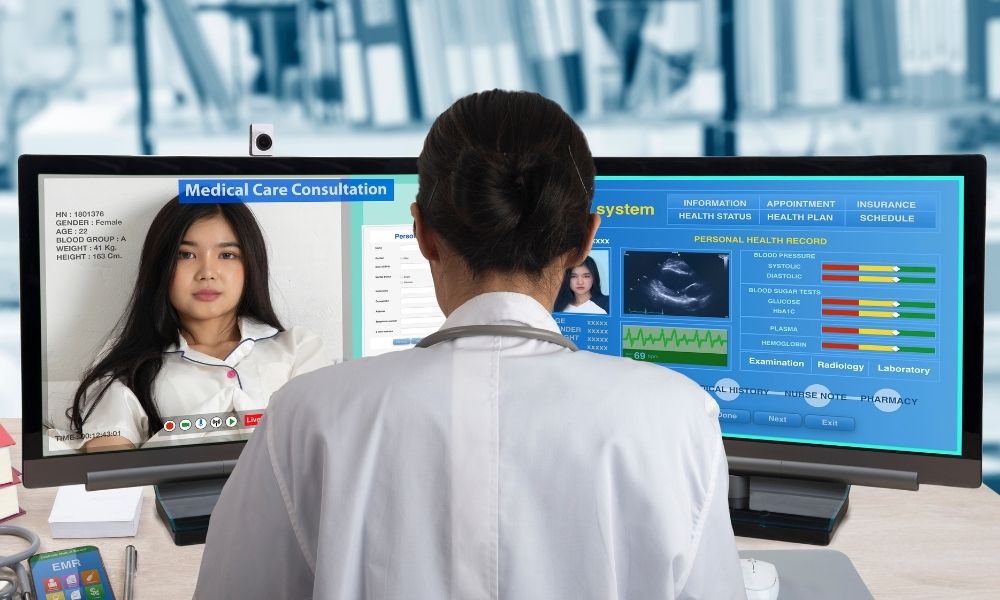We’re getting closer to a fully digitalized world with the Covid-19 pandemic. From artificial intelligence to smartphones to robotics and wearable tech, there are a plethora of new advancements to consider. The most impactful is arguably telemedicine, allowing you to make a doctor’s appointment and chat with your doctor from the convenience of your own home.
Experts believe that virtual and digital healthcare services are the future of healthcare. Through investments in cutting-edge tech that enables surgeons to remotely monitor patients, to startups using telemedicine to help address health disparities, the telemedicine market is booming.
7 Reasons Why Telemedicine Is the Future of the Healthcare Industry:
1. Demand from Millennials Bringing Telemedicine Mainstream
Millennials account for 73 million people in the United States. According to Census Bureau demographic projections, they have overtaken the Baby Boomer generation as the nation’s biggest living adult generation.
Millennials prefer healthcare systems that respond quickly and use cutting-edge technologies to enhance treatment speed and effectiveness. Online appointment scheduling, self-service portals, and telemedicine are being used as alternatives to more conventional techniques. The newer generations consider medical technology to be a normal and expected component of the system.
Here is a breakdown of the data from the referenced survey:
- Telemedicine is preferred by 74% of Millennials over a conventional visit.
- 71% of patients would like to book appointments via a mobile app.
- 26% would prefer PCPs for video visits.
- 75% of those who have had a telehealth appointment say it is better than going to a clinic.
2. Leveraging Technology to Enable Collaboration among Different Stakeholders
We look at how edge computing and AI placed revolutionary skills in the hands of healthcare professionals during the start of the Covid-19 epidemic. Telemedicine’s usage will continue to grow long after the pandemic is over because it has improved patient care and experience by ensuring accessibility.
For example, practitioners were able to follow the health of high-risk people, such as seniors and post-op patients, from the safety of their own homes using remote patient monitoring.
Developing a telemedicine app for medical practices and specialties is a game-changing shift, not just because it provides doctors with unprecedented levels of knowledge about their patients, but rather because the more these devices are utilized the more innovation is released. Because AI feeds on data, we’re starting to see newer AI-based applications emerge as the data pool grows.
For example, Medical Informatics Corporation (MIC) and Intel are collaborating to help hospitals analyze and centralize data from devices that monitor patients’ vital signs, reducing “alarm fatigue” and reducing the number of rounds required by care teams on patients by triaging the patients who require attention.
Telemedicine, driven by AI and the edge also allows physicians and hospitals to cooperate in unprecedented ways, pooling resources at crucial moments.
See Also: What Impact Will the IoT Have on Healthcare Sector?
3. Insurance Assistance for Telemedicine Reimbursement
Insurance companies are taking additional steps to pay telemedicine costs as these services are becoming more frequently utilized. Moreover, at least 42 states in the United States have laws in place that mandate insurance companies to pay a specific level of telemedicine services as of October 2019.
The Centers for Medicare & Medicaid Services (CMS) released its “final rule for 2020,” which details changes to telemedicine payment codes. For the time being, Medicare only pays for live telemedicine services (video calls in real-time).
4. Helping to Alleviate the Nurse and Physician Shortage
Telehealth services may alleviate the present and future nursing and physician shortages, in addition to nurse burnout, with almost half a million registered nurses expected to retire by 2022.
According to new statistics released by the AAMC (Association of American Medical Colleges), between 54,100 and 139,000 doctors would be needed in the United States by 2033, with shortages in both basic and specialty care.
As we continue to fight the COVID-19 epidemic, the gap between the country’s growing healthcare needs and the supply of physicians to properly react has grown increasingly apparent. As the nation’s population continues to expand, the issue of having enough physicians to serve our communities will become much more difficult.
Telemedicine may assist to mitigate the loss of on-site staff by enabling doctors and even nurses in other places to offer medical care to patients without putting a strain on a physical facility’s resources. Telehealth nurse jobs are becoming increasingly frequent as they become more integrated into the care continuum.
See Also: How AI Chatbots Are Digitizing Patient Care
5. Promotion of Data-Driven Healthcare
Many studies and statistics on healthcare services have shown that the quality of medical care delivered via telecommunication may pose challenges to conventional doctor-patient relationships. Around 76% of patients value the integration of AI into medical care above the use of human contact.
In reality, telemedicine has been proven to enable excellent treatment with better results and greater patient satisfaction in some circumstances, such as an urgent emergency case when the patient could not be transferred to a physical care facility right away.
The use of cloud services in telehealth raises security and patient privacy issues, but it also offers professionals easy access to healthcare information from any device and from any place. The usage of cloud solutions must not infringe on a customer’s right to privacy. HIPAA compliant cloud hosting provides a high degree of security to the telemedicine industry.
6. Chronically Sick People Will Seek Out More Virtual Care
One in every three people has one or more chronic illnesses, and 44 percent of them have chosen to forego appropriate treatment owing to excessive costs. Virtual care is expected to be chosen by up to 72 percent of chronically ill patients for monitoring their health, and this figure is growing.
Patients in remote regions with limited access to healthcare services or transportation may find telemedicine to be a lifesaver. Even in metropolitan areas, public transit may be difficult; telemedicine allows less mobile patients, chronically sick, to get the treatment they require and do so more autonomously!
Also Read: How Much Does It Cost to Develop a Medicine Delivery App?
7. Patients Benefit from Cost Reductions
Telemedicine services have been proven to decrease patients’ healthcare expenditures by reducing hospital stays to a minimum, reducing travel time to a clinic, and improving chronic illness management overall.
Readmissions and other adverse outcomes have been shown to be reduced via telemedicine at a price that is less than the price of the issues themselves. Telepathology and teleradiology are examples of remote analytic services that allow resource pooling, resulting in reduced costs and better quality treatment.
Patients will choose to continue this kind of treatment if they can contact their medical team from the comfort of home. Nurses and doctors may take advantage of this by increasing their virtual medical practice base and improving their continuing relationships with current patients by interacting with them more often.
Also Read: What Are the Best Apps for Doctors
Conclusion
Now it is clear that why telemedicine is the future of the healthcare industry. Patients are increasingly turning to physicians for help in managing their own health as digitally enabled solutions grow more widespread and sophisticated. Clinicians will be able to get information about a patient’s daily routine and health condition via wearable technology and other RPM devices.
Smartphones are used by 77 percent of people in the United States (Pew, 2018). Few sectors have been unaffected by the rapid development of mobile technology, and in health care, these innovations have had a significant and long-lasting impact on stakeholders. EHRs, telemedicine, mobile apps, and other ICT have changed the way clients and providers communicate, as well as the degree to which they interact.





















